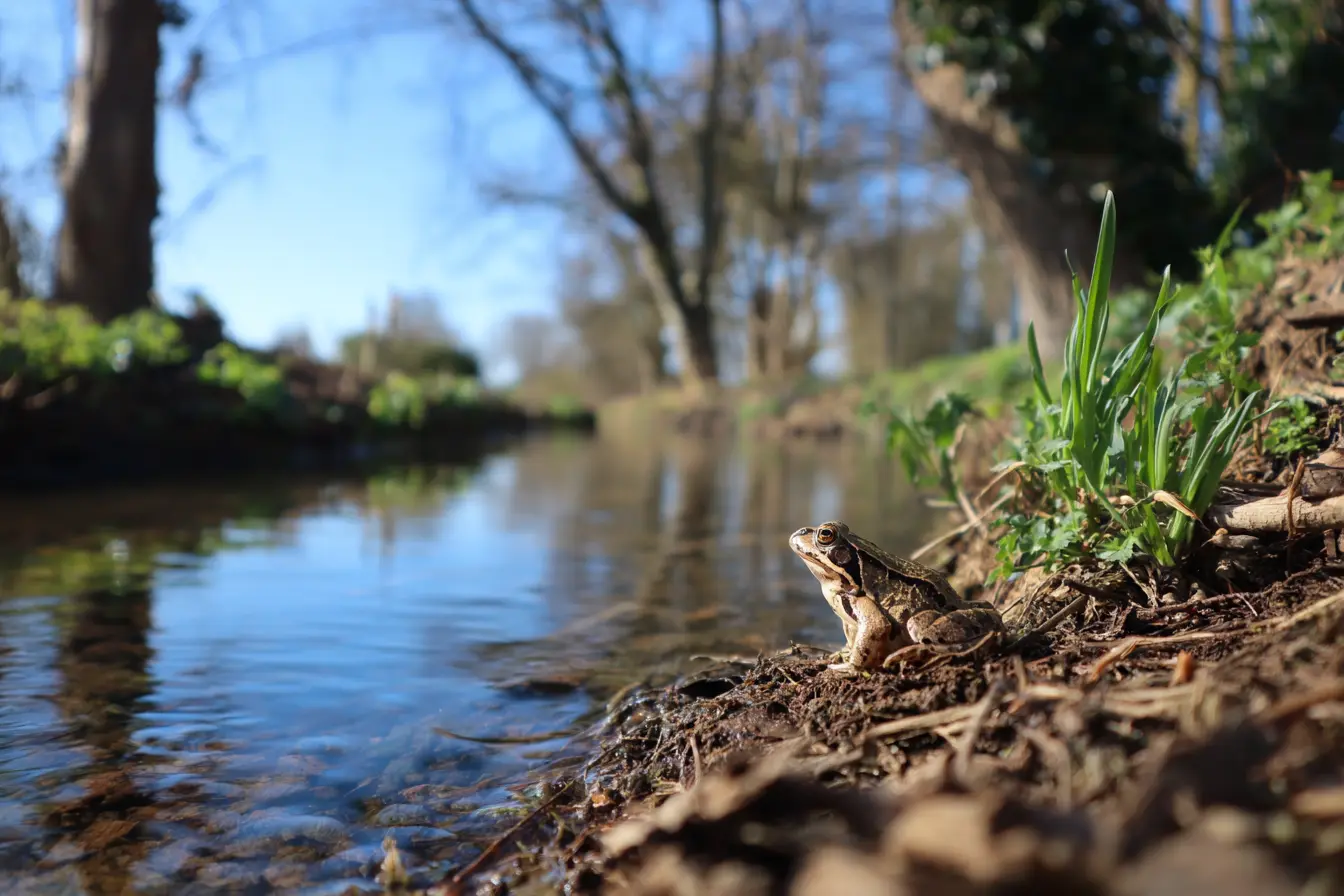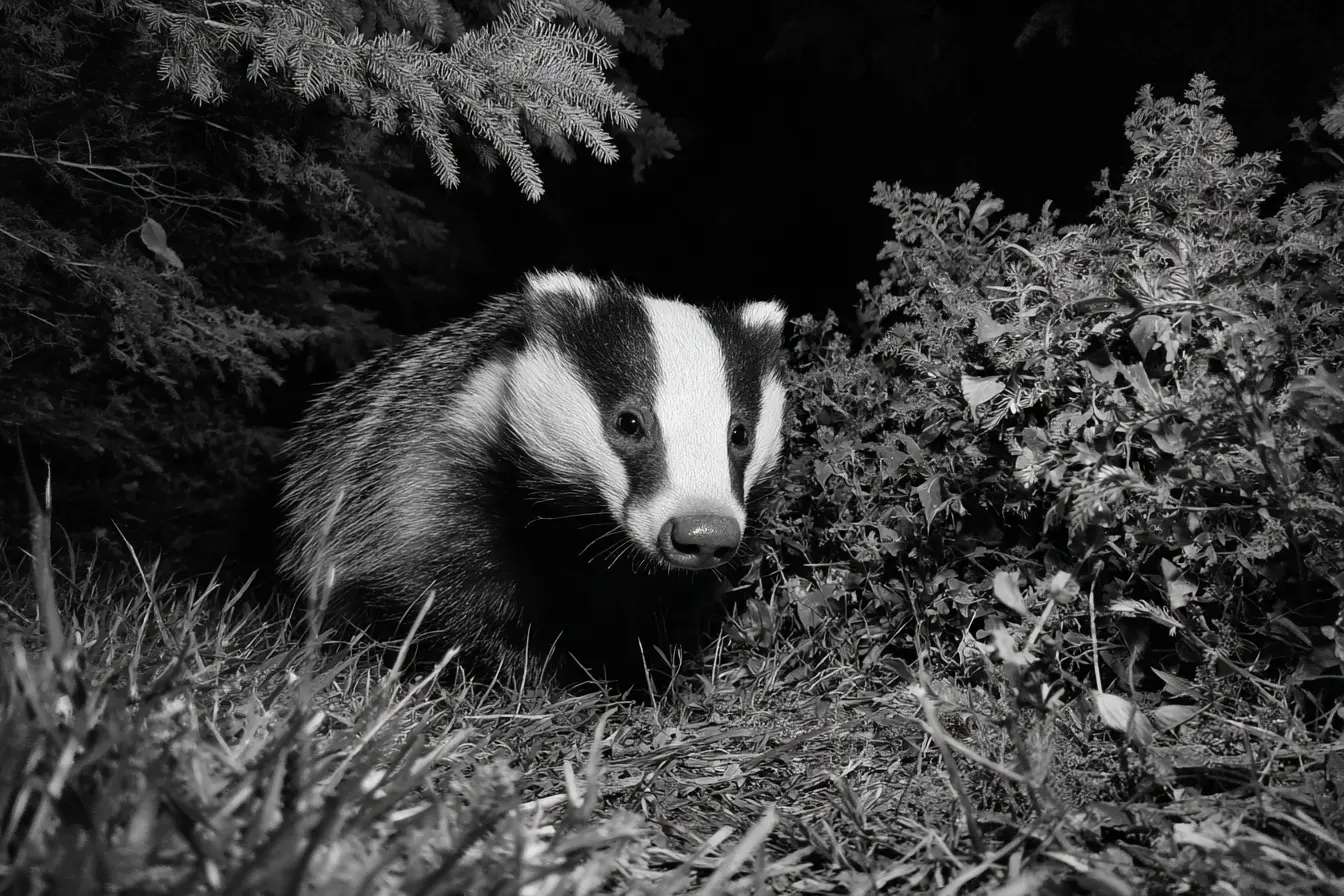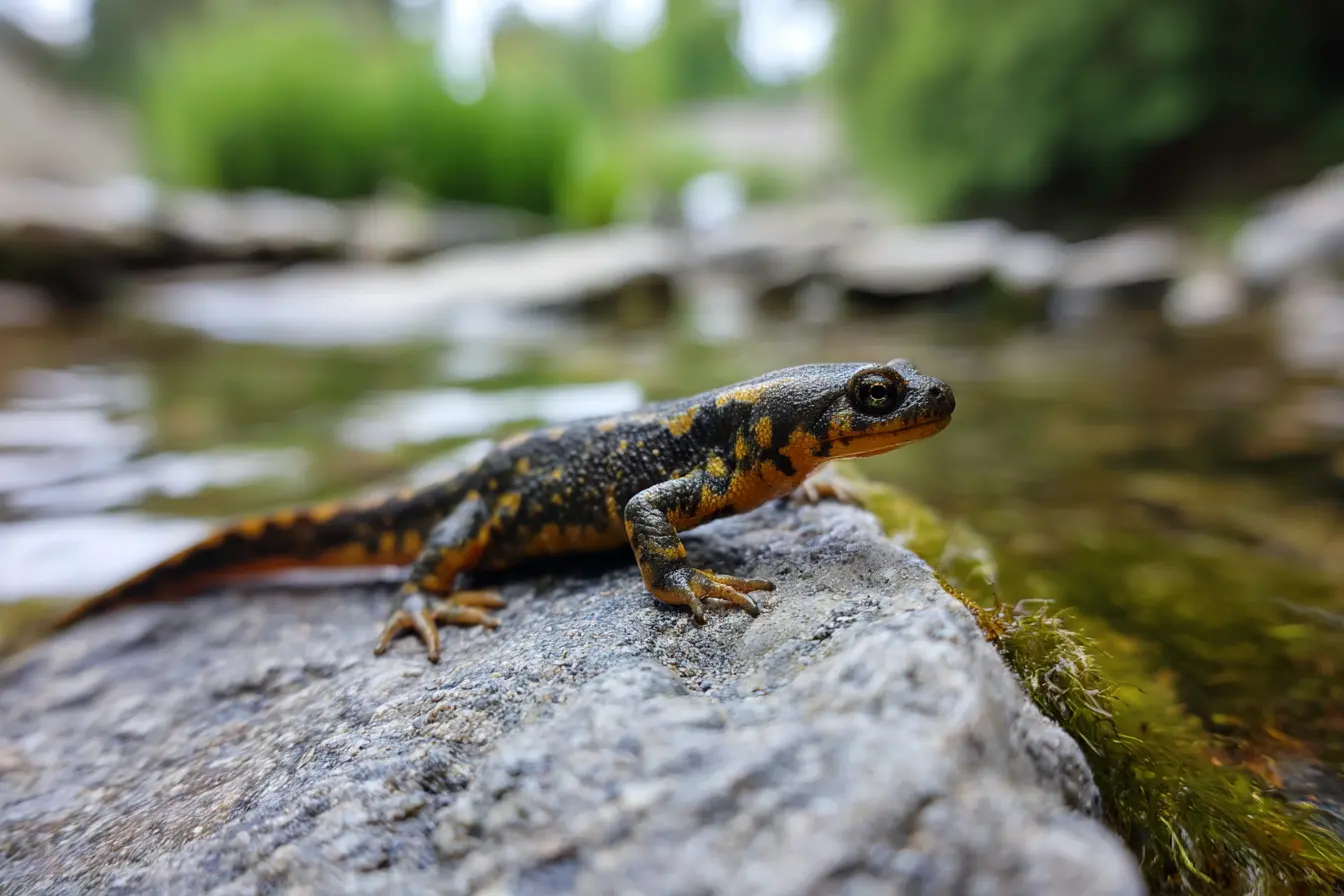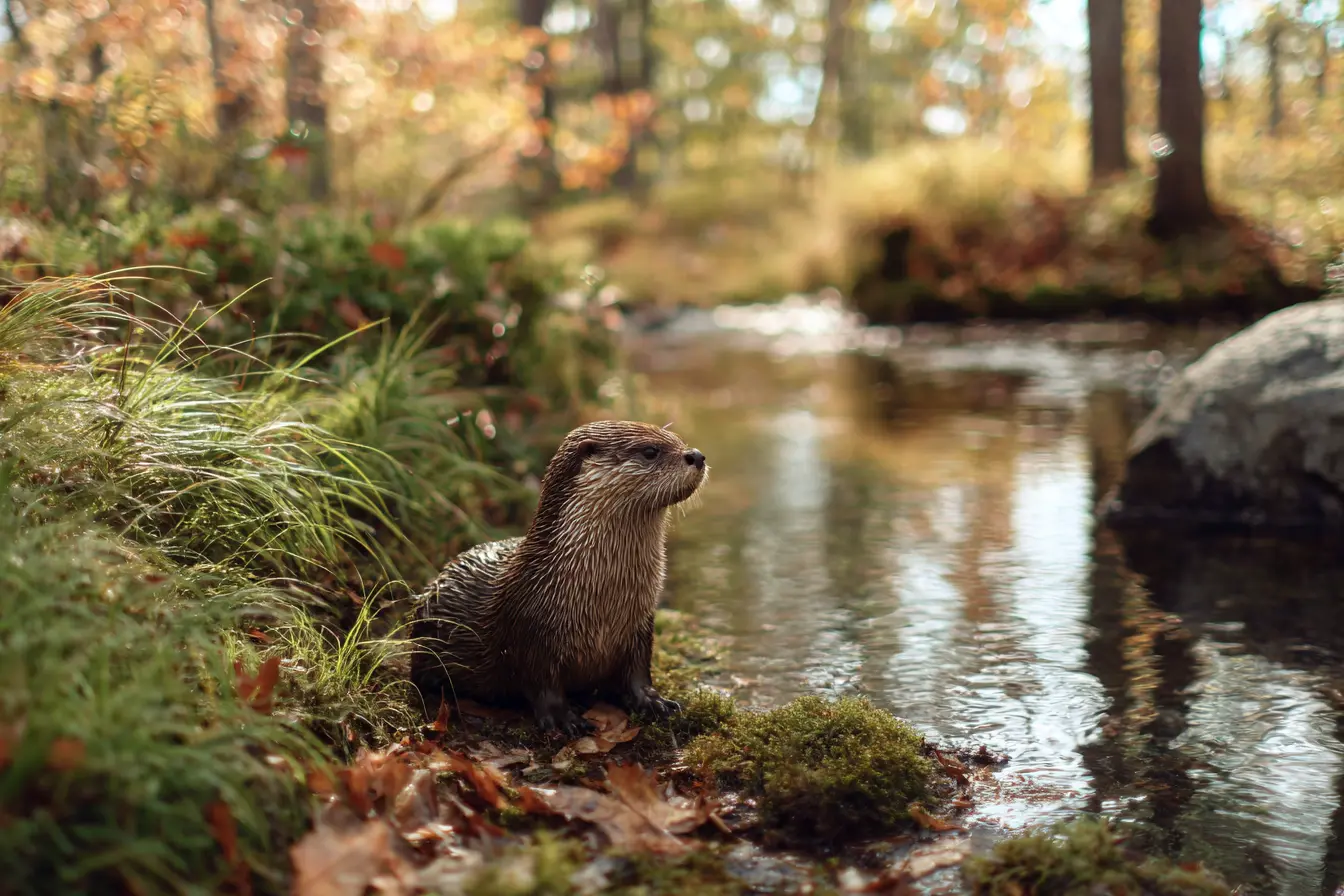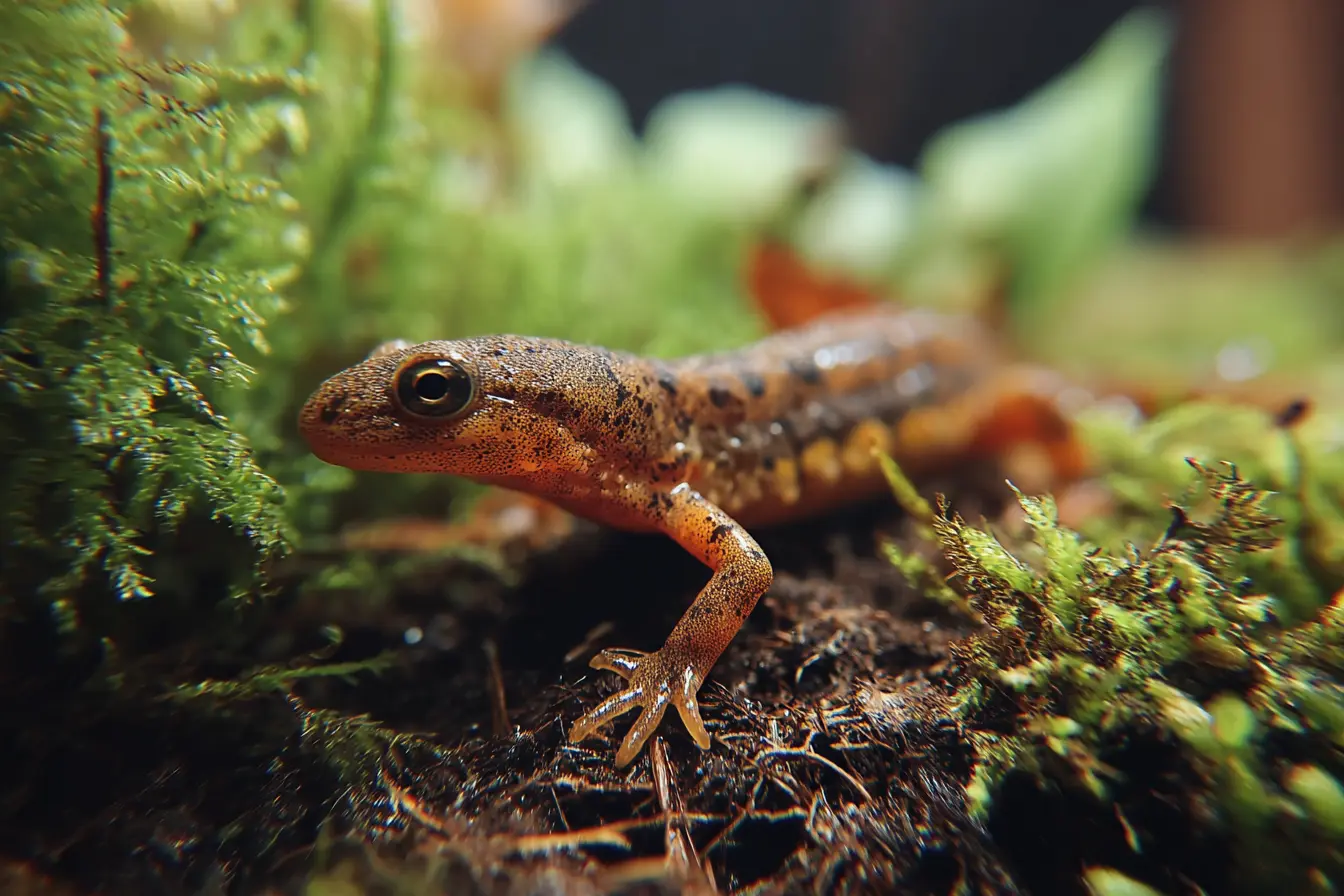
Native Newts in the UK
The United Kingdom is home to three species of native newts, each playing an important role in the country’s wetland and terrestrial ecosystems. These are the great crested newt (Triturus cristatus), the smooth newt (Lissotriton vulgaris), and the palmate newt (Lissotriton helveticus). Though often overlooked, these amphibians are vital indicators of environmental health and require our attention and protection.
This post explores everything you need to know about these native species, including their identification, behaviour, life cycles, habitats, conservation status and how to help protect them.
Overview of UK’s Native Newt Species
Great Crested Newt
This is the largest and most strictly protected of the UK’s newts. Adults can grow up to 17 cm and are characterised by dark, rough, warty skin. Males develop a prominent jagged crest during the breeding season, while both sexes have striking orange bellies with black blotches.
Smooth Newt
The most widespread newt in the UK, also known as the common newt. Smooth newts have smooth, brownish skin and are smaller than great crested newts, growing to around 10 cm. Males develop a wavy crest during the breeding season, and both sexes have orange bellies with small black spots.
Palmate Newt
Very similar in size and appearance to the smooth newt but with key differences. Males develop webbed hind feet and a filament at the tip of the tail during the breeding season. Palmate newts are more associated with acidic or upland areas and are more common in western Britain.
Other Newts in the UK
Great crested, smooth, and palmate newts are the only newts native to the UK. However, a few non-native species have been introduced in isolated areas:
- Alpine newt (Ichthyosaura alpestris): Originally from central and southern Europe, small introduced populations exist in parts of England, often in private or enclosed sites. These are not considered native and are closely monitored due to concerns about disease transmission to native amphibians.
- Italian crested newt (Triturus carnifex): Also introduced in limited settings such as ornamental lakes or estates, but not naturally occurring.
These non-native newts are not widespread and typically do not establish stable wild populations. Their presence highlights the importance of responsible species management and biosecurity, particularly due to the risk of spreading chytrid fungus and other amphibian diseases.
Distribution and Habitat
All three native species occur across much of the UK, although distribution varies by habitat and region.
- Great crested newts are found throughout England and parts of lowland Scotland and Wales, often in lowland areas with a network of ponds and suitable terrestrial habitat.
- Smooth newts are widespread across the UK, including urban areas and gardens.
- Palmate newts are more restricted to the west and north, favouring heathlands, moorlands, and acidic pools.
All three species require a mix of aquatic and terrestrial habitats. They breed in ponds but spend much of the year on land, often sheltering under logs, rocks, or in crevices.
Life Cycle and Breeding
The life cycle of UK newts follows a similar seasonal pattern, though timings may vary with weather and geography.
Spring
Adults return to breeding ponds from terrestrial hibernation. Males perform elaborate courtship displays to attract females. Mating and egg-laying occur from March to June.
Summer
Eggs are laid individually and wrapped in aquatic plant leaves. After a few weeks, larvae hatch and live in the water. They resemble tadpoles but have external gills.
Late Summer to Autumn
Larvae metamorphose into juvenile newts (called efts), which leave the pond and begin a terrestrial life. Some may overwinter in water if conditions are not favourable for metamorphosis.
Autumn to Winter
Newts hibernate in sheltered, frost-free terrestrial sites such as log piles, old walls, or underground burrows. Hibernation may last from October to February or March.
Diet and Predators
Newts are carnivorous and feed on a wide range of invertebrates.
- In ponds, they eat aquatic insects, crustaceans, worms, and tadpoles.
- On land, they consume slugs, snails, spiders, and insects.
Newts themselves are preyed upon by birds, mammals (such as hedgehogs and foxes), and fish. Their toxic skin secretions offer some defence, particularly in the great crested newt, which has stronger toxins than the others.
Identification Tips
Differentiating the three species, especially smooth and palmate newts, can be challenging. Here are some pointers:
- Great crested newts are much larger, with black, rough skin and a bright orange belly.
- Smooth newts have a spotted orange belly and lack the webbed feet and tail filament seen in male palmate newts.
- Palmate newts tend to have less distinct belly markings, a pinkish or yellowish underside, and males show webbed hind feet and a thin tail filament during breeding season.
Legal Protection and Conservation
All three species are protected under UK law, though the level of protection varies.
- Great crested newts receive the highest level of protection under the Wildlife and Countryside Act 1981 and the Conservation of Habitats and Species Regulations 2017. It is illegal to capture, kill, injure or disturb them or to damage their habitats.
- Smooth and palmate newts are protected from sale or trade but not from disturbance or habitat damage unless covered under specific local protections or biodiversity action plans.
Threats
- Habitat loss: Pond drainage, agricultural intensification, urban development.
- Pollution: Runoff from roads, chemicals, and fertilisers affecting water quality.
- Fragmentation: Loss of terrestrial habitat connectivity reduces breeding success.
- Fish introduction: Fish prey on eggs and larvae.
- Climate change: Alters pond drying patterns and seasonal behaviours.
Conservation Actions
- Creating and restoring wildlife ponds
- Managing terrestrial habitats such as hedgerows and grasslands
- Monitoring populations through citizen science schemes
- Implementing protection during development through ecological surveys and mitigation
How to Help Newts
Even simple actions can support newt populations in your area:
- Build a wildlife pond: Ensure it is fish-free and includes shallow edges and native aquatic plants.
- Leave wild corners: Log piles, undisturbed areas, and natural refuges provide hibernation and shelter sites.
- Avoid pesticides and herbicides: These can leach into ponds and harm amphibians.
- Report sightings: Local records centres and conservation organisations use data to monitor and protect populations.
- Get involved: Join local amphibian and reptile groups, or contribute to national surveys like the National Amphibian Survey or PondNet.
Conclusion
The UK’s native newts are extraordinary and ecologically valuable amphibians. From the regal great crested newt to the modest smooth and elusive palmate newts, they all contribute to the health of our natural landscapes. With habitats under pressure, understanding and supporting these species is more important than ever.
Protecting newts is about more than just conserving a single species — it is about preserving the rich tapestry of life that depends on clean water, wild spaces, and ecological balance.
Vets near you
Speciality vets
- Aquatics vet specialists
- Birds vet specialists
- Camelids vet specialists
- Cats vet specialists
- Cattle vet specialists
- Deer vet specialists
- Dogs vet specialists
- Equines vet specialists
- Exotic vet specialists
- Goats vet specialists
- Pigs vet specialists
- Poultry vet specialists
- Sheep vet specialists
- Small Mammals vet specialists
- Wild vet specialists
